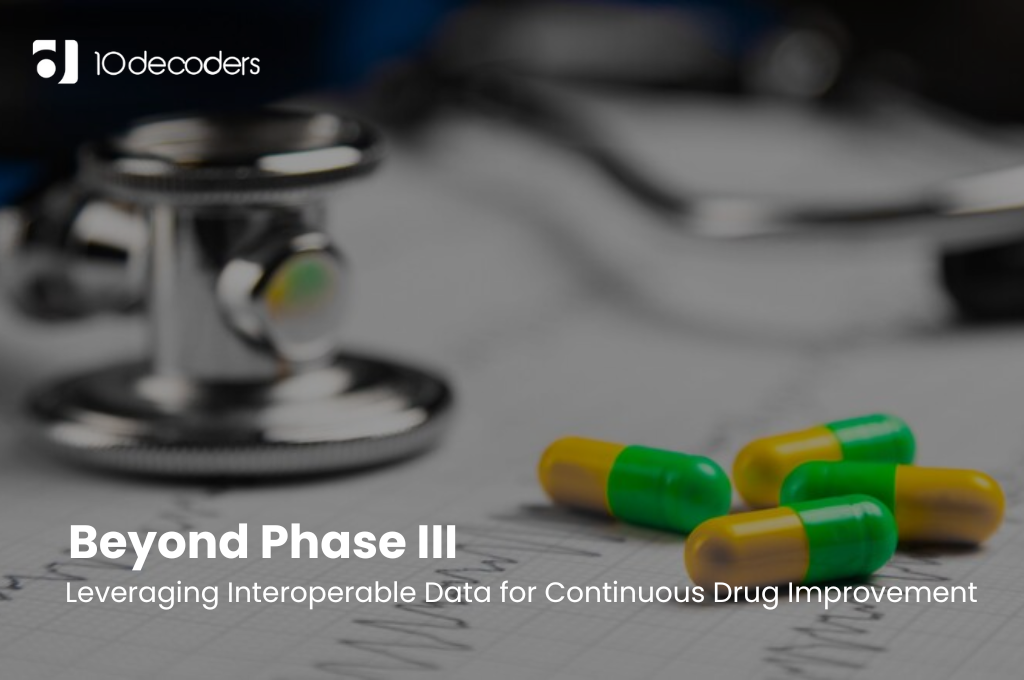Beyond Phase III: Leveraging Interoperable Data for Continuous Drug Improvement
The triumphant completion of Phase III clinical trials, with their meticulously collected data and statistically significant results, often marks the end of a long and arduous journey for a new drug. But is it truly the end? The answer, increasingly, is a resounding no. Interoperable data, the seamless exchange and integration of information across diverse sources, is illuminating a new frontier: continuous drug improvement, extending the journey beyond Phase III and propelling innovation in real-world settings.
Traditionally, the post-Phase III landscape has been shrouded in relative darkness. Drug safety monitoring relied primarily on spontaneous adverse event reports, a notoriously passive and incomplete mechanism. Efficacy assessments remained confined to the controlled environment of clinical trials, failing to capture the nuances of real-world patient experiences. This limited visibility often delayed identification of unforeseen safety concerns and masked valuable insights into drug effectiveness in diverse populations.
Interoperability, however, is now shedding light on this previously obscured terrain. By unlocking the doors of data silos, it empowers us to harness a wealth of information generated in the real world
- Electronic health records (EHRs): A rich tapestry of diagnoses, medications, procedures, and laboratory results, EHRs offer a comprehensive portrait of individual patient journeys. Aggregating and analysing data from millions of EHRs can reveal previously invisible patterns of drug use, safety signals, and long-term efficacy trends.
- Real-world evidence (RWE): Studies conducted outside the controlled environment of clinical trials, RWE provides crucial insights into how drugs perform in the messy reality of everyday healthcare. Interoperability facilitates the integration of RWE data with traditional clinical trial data, creating a more holistic picture of a drug’s true impact.
- Wearable devices and biosensors: Generating continuous streams of physiological data, these technologies open a window into patients’ real-time responses to medications. Interoperability enables the fusion of this data with other sources, enabling researchers to understand how individual factors and environmental contexts influence drug effectiveness and safety.
Unlocking the Potential: Insights and Applications
This influx of real-world data, empowered by interoperability, fosters a multitude of novel applications for continuous drug improvement
- Proactive safety monitoring: By mining EHRs and other real-world data sources, scientists can identify previously unknown adverse events and safety risks sooner, leading to quicker interventions and improved patient safety.
- Precision medicine: Interoperable data analysis can reveal how individual genetic and phenotypic factors influence drug response, paving the way for personalised treatment regimens and dosage optimization.
- Label expansion: Real-world evidence gleaned from interoperable data can support the expansion of a drug’s approved indications, providing access to effective treatments for new patient populations.
- Comparative effectiveness research: Comparing the performance of different drugs in real-world settings under routine clinical practice informs optimal therapeutic choices and guides treatment guidelines.
- Drug innovation optimization: Continuous feedback from real-world data facilitates the iterative refinement of drug development programs, allowing researchers to prioritise promising candidates and allocate resources more effectively.
Challenges and Navigating the Road Ahead
While the potential of interoperable data for continuous drug improvement is undeniable, significant challenges persist
- Data privacy and security: Robust data governance frameworks and stringent security measures are essential to ensure patient privacy and build trust in data-driven initiatives.
- Data quality and standardisation: Heterogeneity in data formats and varying data quality across different sources hinder seamless integration and meaningful analysis. Standardising data collection and harmonising formats are crucial for reliable cross-source comparisons.
- Analytical limitations: Navigating the vastness and complexity of interoperable data requires advanced analytical tools and skilled data scientists to derive actionable insights from the noise.
- Regulatory hurdles: Integrating real-world data into regulatory decision-making necessitates ongoing dialogue and collaboration between industry, academia, and regulatory agencies.
Overcoming these challenges requires a concerted effort from all stakeholders. Public-private partnerships can invest in robust data infrastructure and harmonise data standards. Academia can focus on developing advanced analytical tools and training data scientists. Regulatory agencies can adapt their frameworks to incorporate real-world data while ensuring patient safety and drug efficacy.
Conclusion: A Paradigm Shift in Drug Development
Interoperable data stands at the threshold of a new era in drug development, one where continuous improvement transcends the limitations of Phase III. By harnessing the power of real-world information and fostering a collaborative ecosystem, we can unlock a future where drugs continuously evolve, adapting to patients’ needs and optimising their impact on health. This paradigm shift holds the promise of safer, more effective treatments for all, accelerating the journey from bench to bedside and transforming the landscape of healthcare for generations to come.



